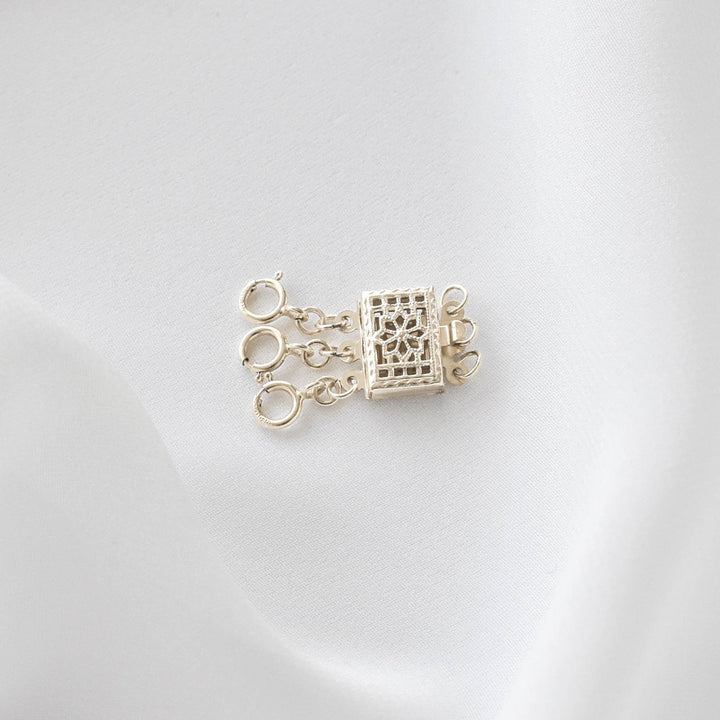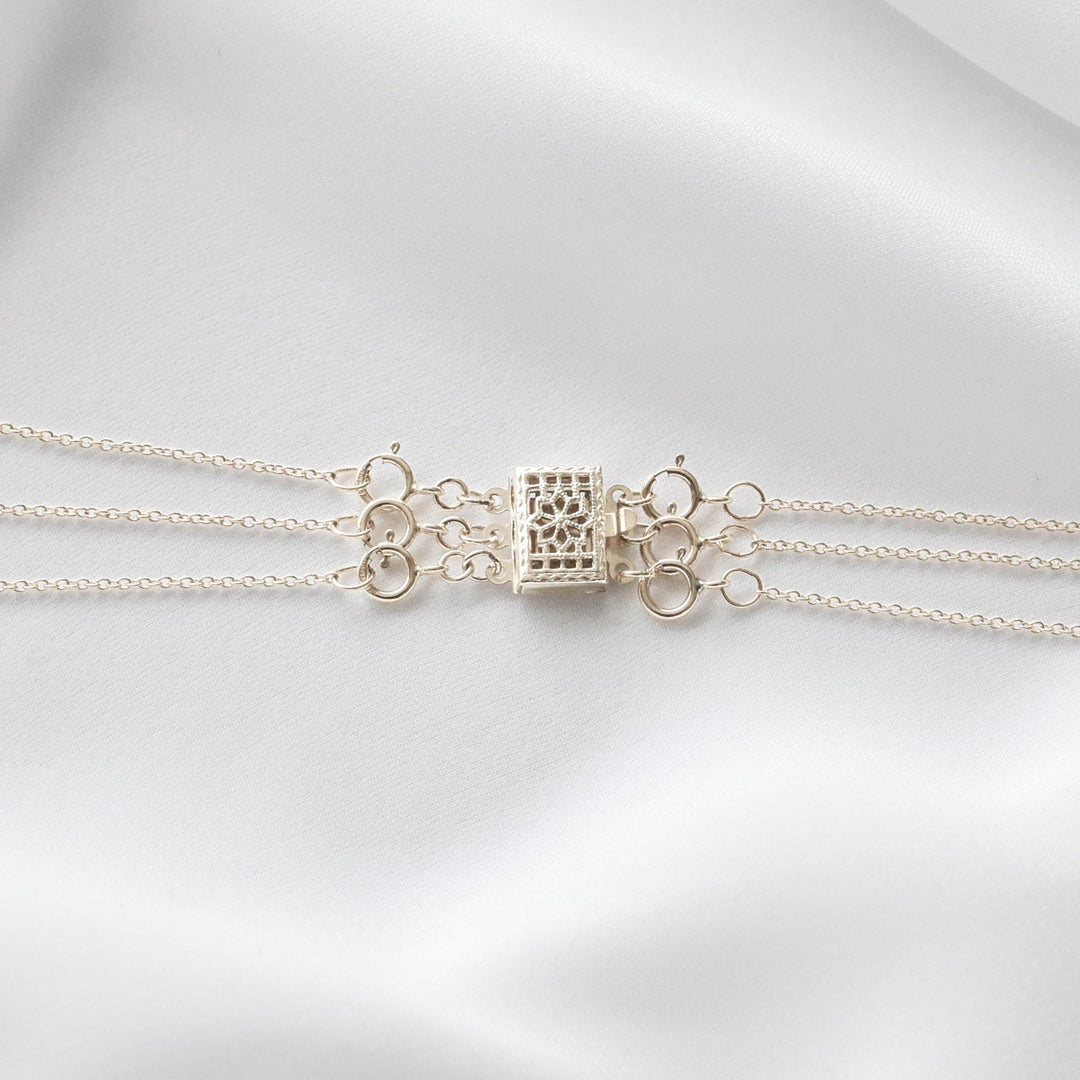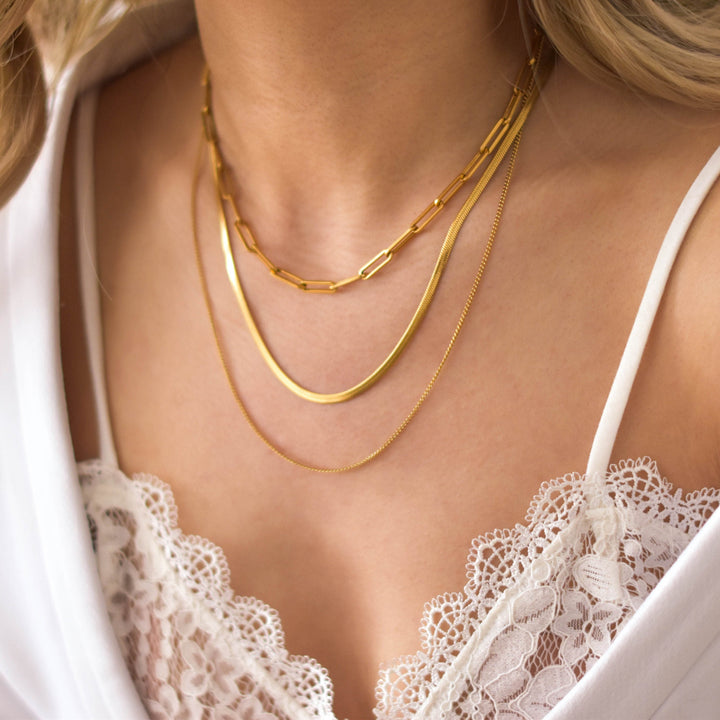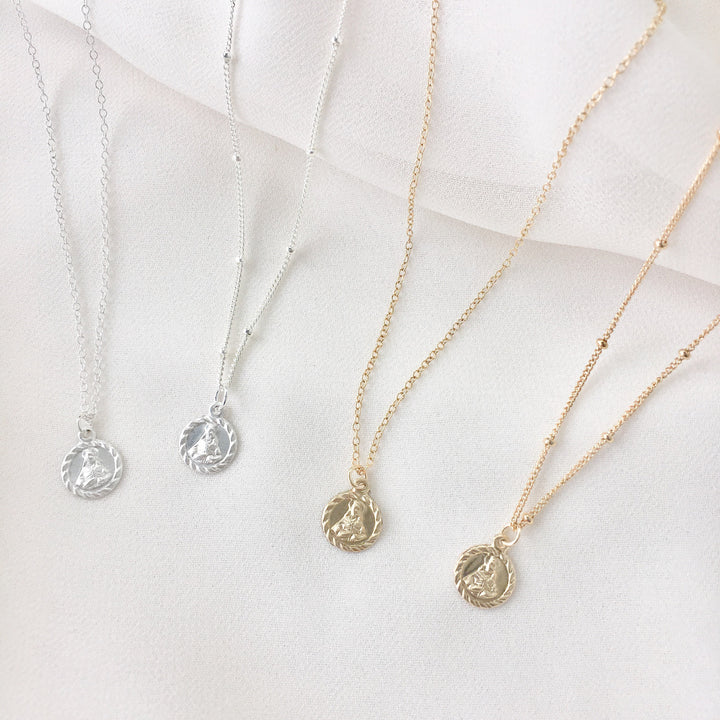How to Keep Necklaces from Tangling
So you love to layer your necklaces but hate how annoying it is when it tangles constantly. Well, here are some tips to keep your necklaces photoshoot-ready:
1) Choose the right type of chain links to keep necklaces from tangling.
Necklace chains to get:
Dense necklace chains that don't bend will resist tangling like the set of 3 chains, pearl chain choker, chain necklace set on the bottom left, or the pearl compass necklace on the bottom right. There is a huge variety of necklace chains out there and some necklace chains are just much less prone to tangling than others. Look for necklace chains that are dense and sleek-looking like the snake chain or box chain. Since these don't even want to bend, they're much less likely to tangle.
Necklace chains to avoid:
Avoid very fine, dainty necklace chains like the one on the seashell pearl necklace or the St. Jude coin necklaces. These are so delicate and beautiful, perfect for an understated minimalist look, but unfortunately they are tangling monsters. If you must layer necklaces with a fine dainty chain, at least, layer it with a much shorter, choker necklace which would stay out of its way, or use a detangler clasp (see tip #3).
2) Use thicker necklaces which naturally don't tangle as much.
Thicker and heavier chains will move around less and also tangle much less. Go for a thick statement choker or a heavy chain like this padlock necklace on the left or the chunky toggle necklace on the right. Strands of pearls are also very unlikely to tangle given their thick width relative to most chains.
3) Use a necklace detangler clasp to help keep tangling away.
Necklace detangler clasps and anti-tangle clasps:
If you're in love with layering tiny dainty necklaces, don't worry, you can still use a detangler clasp. Just attach all the necklaces you want to layer onto the detangler clasp before wearing. This works great for layering with necklaces that are especially prone to tangling. It also helps keep all your necklace clasps securely in the back and keep them from riding to the front.
But wait! There's different types of anti-tangle necklace clasps, which one is right for you?
Magnetic Detangler Necklace Clasps:
These stick together by magnets which can come apart more easily so it's not the best choice for layering necklace chains that are heavy. You wouldn't want to lose your whole necklace stack! Also, these magnetic detangler clasps are also quite heavy, so if your necklaces are long and lightweight, this clasp will weigh it down from the back, pulling your necklaces up much higher.
These detangler clasps are however, extremely convenient to put on and take off. It's just a simple slide away. They're also widely available at very affordable prices, so you can always try a gold plated version to see if it works for you before investing in a gold-filled one.
Non-magnetic Detangler Necklace Clasps:
Also available in sterling silver:


These non-magnetic detangler clasps are very tight, so it's a bit harder to open and close. It's however, very sturdy, so it would be able to handle heavier necklaces without you having to worry about it coming apart. It's also more lightweight, so it won't weigh down your necklaces from the back as much as some other detangler clasps.
4) Combine multiple strategies to keep necklaces from tangling.
The more, the better! Try combining all of the above by using thick chains, dense/sleek looking chains, and put them on a detangler clasp!




























Leave a comment
Please note, comments must be approved before they are published